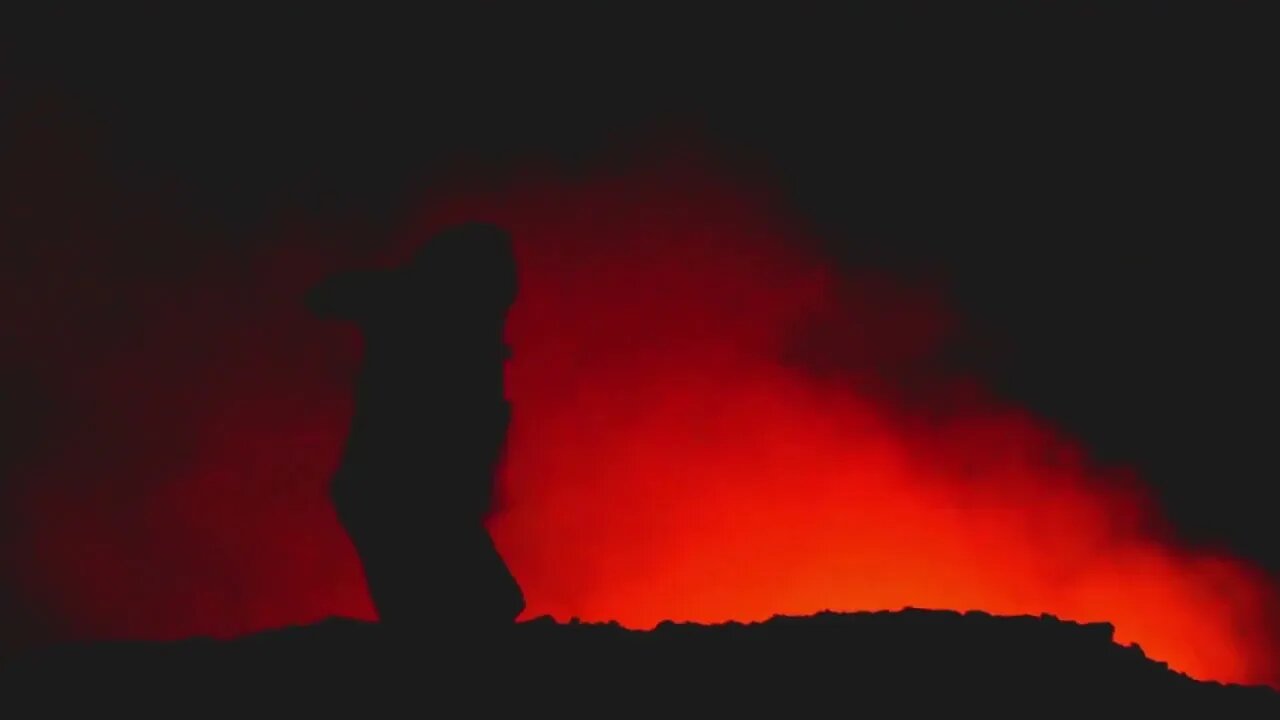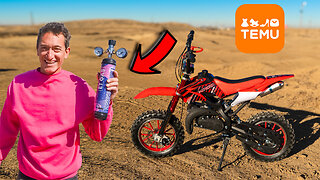Premium Only Content

lava erupting from the crater of a volcano #shorts
Lava is molten rock that has been expelled from the interior of a terrestrial planet or a moon onto its surface 1. It is also known as volcanic lava or magma (molten rock) emerging as a liquid onto Earth’s surface 12. The temperatures of molten lava range from about 700 to 1,200 °C (1,300 to 2,200 °F) 1. The material can be very fluid, flowing almost like syrup, or it can be extremely stiff, scarcely flowing at all. The higher the lava’s silica content, the higher its viscosity 1.
Lava can be classified into different types based on their composition and temperature. Some of the common types of lava include aa, pahoehoe, pillow lava, and block lava flow 1. Mafic (ferromagnesian, dark-colored) lavas such as basalt characteristically form flows known by the Hawaiian names pahoehoe and aa (or a’a) 1. Pahoehoe lava flows are characterized by smooth, gently undulating, or broadly hummocky surfaces. The liquid lava flowing beneath a thin, still-plastic crust drags and wrinkles it into tapestry-like folds and rolls resembling twisted rope. Pahoehoe lava flows are fed almost wholly internally by streams of liquid lava flowing beneath a solidified or partly solidified surface. Typically, the margin of a pahoehoe flow advances by protruding one small toe or lobe after another. In contrast to pahoehoe, the surface of aa lava is exceedingly rough, covered with a layer of partly loose, very irregular fragments commonly called clinkers. Aa lava flows are fed principally by rivers of liquid lava flowing in open channels. Typically, such a feeding river forms a narrow band that is 8 to 15 meters (25 to 50 feet) wide along the center line of the flow, with broad fields of less actively moving clinker on each side of it. At the front of the flow, clinkers from the top roll down and are overridden by the pasty center layer
-
 2:52:31
2:52:31
TimcastIRL
5 hours agoDemocrats Prep For Derek Chauvin PARDON, Ready To RETURN HIM, Riots Feared | Timcast IRL
398K74 -
 1:10:15
1:10:15
Man in America
1 day agoDays of Noah in America: A Nation Asleep as the Flood Approaches w/ Clayton Llewellyn
47.4K25 -
 13:03
13:03
Dr Disrespect
1 day agoDRDISRESPECT REACTS TO GTA 6 TRAILER
22.8K17 -
 2:18:00
2:18:00
I_Came_With_Fire_Podcast
10 hours agoTRUMP & THE SAUDIS | DEMS FAFO
22.2K3 -
 1:37:09
1:37:09
Badlands Media
20 hours agoAltered State S3 Ep. 28: Trump’s Middle East Masterstroke and the War on Permanent Enemies
69.9K6 -
 2:03:01
2:03:01
Geeks + Gamers
5 hours agoGeeks + Gamers Play Among Us
31.4K -
 DVR
DVR
Spartan (Pro Halo esports Player)
13 hours agoStar Wars for a bit, then warming up for Shopify Scrim @ 4 EST
29.4K -
 25:32
25:32
The Rad Factory
8 hours ago $0.54 earnedTesting Temu Pit Bike Upgrades
22K2 -
 LIVE
LIVE
Phyxicx
9 hours agoRocket League, Halo, and chill. I've been in a gaming rut lately - 5/14/2025
65 watching -
 4:13:18
4:13:18
Deaf Gamer Girl
14 hours agoDGG playtime | May Creator Program Day #13
5.49K